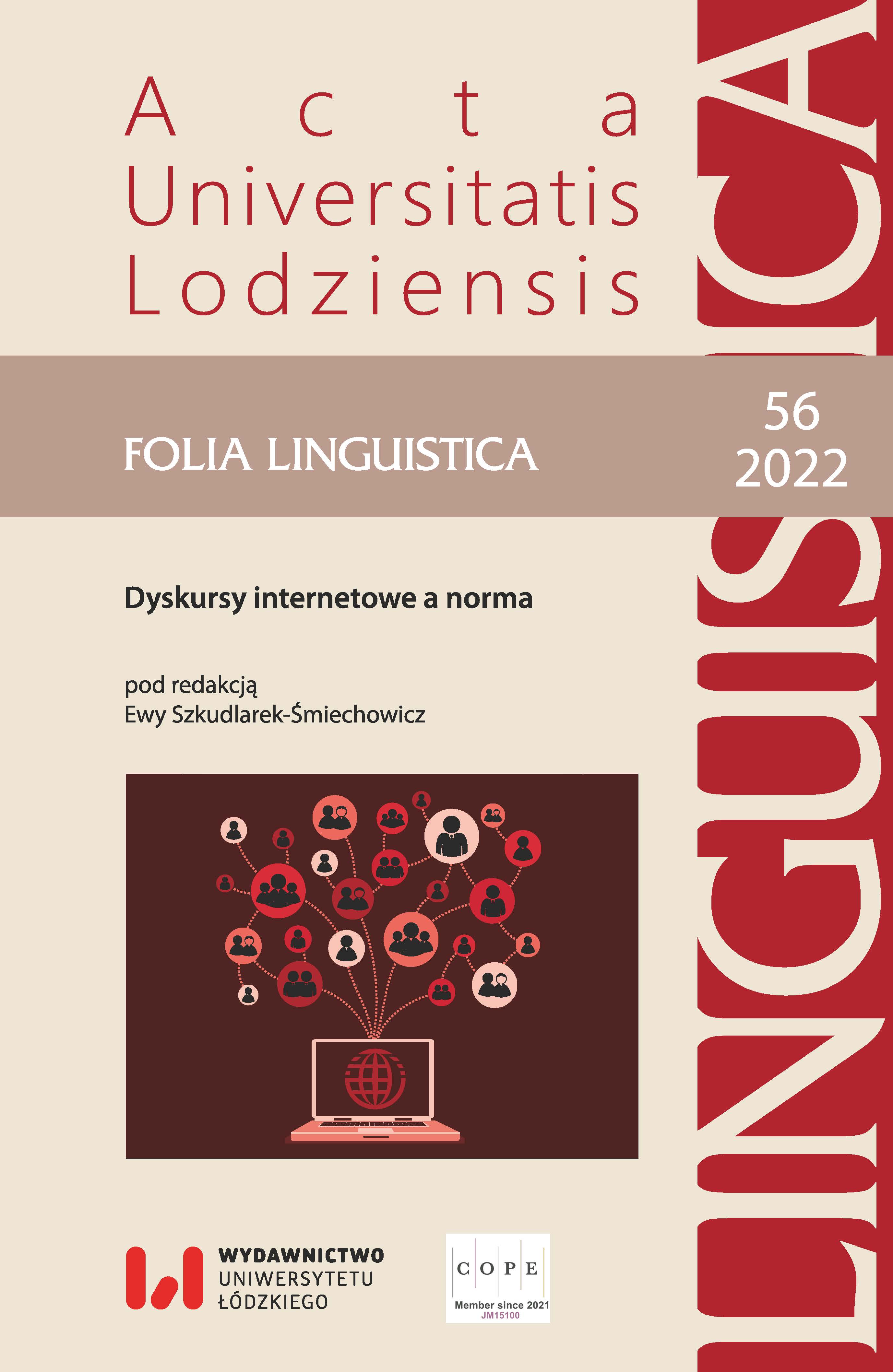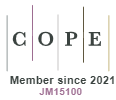Memobłędy jako forma ekspresji językowej internautów
DOI:
https://doi.org/10.18778/0208-6077.56.10Słowa kluczowe:
błędy językowe, dyskurs internetowy, mem, memobłąd, norma językowaAbstrakt
Artykuł ukazuje memobłędy jako funkcjonalne odstępstwa od normy językowej na różnych jej poziomach — ortograficznym, ortofonicznym, fleksyjnym, składniowym i słowotwórczym. Internauci tworzą tego typu wyrażenia jako narzędzie zjadliwej krytyki znanych osób lub grup społecznych, lecz także po to, aby przekazać trudne do wyrażenia w komunikacji pośredniej stany emocjonalne (np. nieszkodliwą zazdrość za pomocą słowa zazdraszczam). Memobłędy mogą być uznawane za odrębne memy kultury (w rozumieniu Dawkinsa), ponieważ przejawiają takie ich cechy, jak zaraźliwość, dialogiczność czy hiperbolizacja rzeczywistości. Niektóre opuszczają memosferę i przedostają się do potocznego języka mówionego (np. madka, ten uczuć, odzobaczyć), nie stanowią jednak większego zagrożenia dla jego poprawności.
Pobrania
Bibliografia
Cambridge Dictionary, https://dictionary.cambridge.org/ (dostęp: 10.10.2021).
Google Scholar
Dawkins R., 2012, Samolubny gen, przeł. M. Skoneczny, Warszawa: Prószyński i S-ka.
Google Scholar
Kamińska M., 2017, Memosfera. Wprowadzenie do cyberkulturoznawstwa, Poznań: Galeria Miejska Arsenał.
Google Scholar
Kita M., 2014, Medialna kariera błędu językowego, w: M. Kita, I. Loewe (red.), Język w mediach. Antologia, Katowice: Wydawnictwo Uniwersytetu Śląskiego.
Google Scholar
Kłosińska K., 2017, Istnienie i kształt normy językowej po przełomie cyfrowym, „Biuletyn Polskiego Towarzystwa Językoznawczego” 73, s. 81–90.
Google Scholar
Levinson P., 2010, Nowe nowe media, przeł. M. Zawadzka, Kraków: Wydawnictwo WAM.
Google Scholar
Markowski A., 2012, Kultura języka polskiego. Teoria. Zagadnienia leksykalne, Warszawa: Wydawnictwo Naukowe PWN.
Google Scholar
Niekrewicz A., 2016, Funkcjonalne naruszenia normy ortograficznej w memach internetowych, „Poznańskie Spotkania Językoznawcze” 32, s. 93–103. https://doi.org/10.14746/psj.2016.32.7
Google Scholar
DOI: https://doi.org/10.14746/psj.2016.32.7
OJ UW — Obserwatorium Językowe Uniwersytetu Warszawskiego, https://nowewyrazy.uw.edu.pl/ (dostęp: 11.10.2021).
Google Scholar
Popiołek M., 2018, Czy można żyć bez Facebooka? Rola serwisów społecznościowych w sieciowym społeczeństwie informacyjnym, Kraków: Wydawnictwo Uniwersytetu Jagiellońskiego.
Google Scholar
Solon O., 2013, Richard Dawkins on the internet’s hijacking of the word ‘meme’, https://www.wired.co.uk/article/richard-dawkins-memes (dostęp: 8.12.2020).
Google Scholar
Wikisłownik, https://pl.wiktionary.org/wiki/odzobaczy%C4%87 (dostęp: 1.10.2021).
Google Scholar
Pobrania
Opublikowane
Jak cytować
Numer
Dział
Licencja

Utwór dostępny jest na licencji Creative Commons Uznanie autorstwa – Użycie niekomercyjne – Bez utworów zależnych 4.0 Międzynarodowe.










